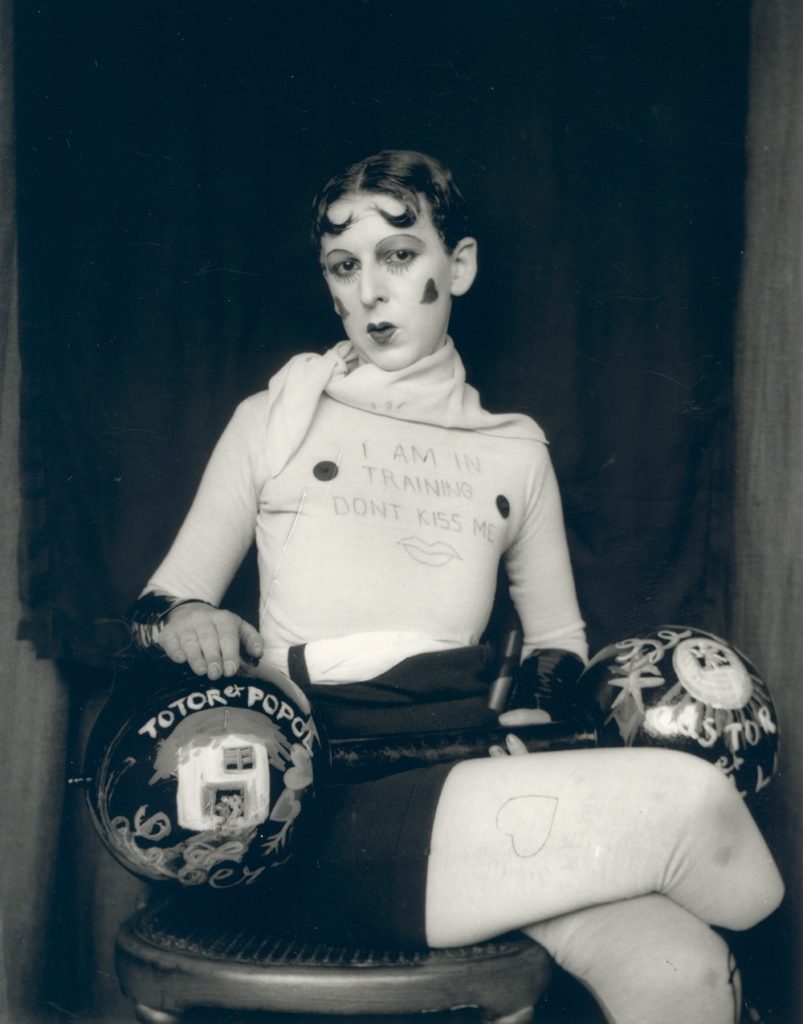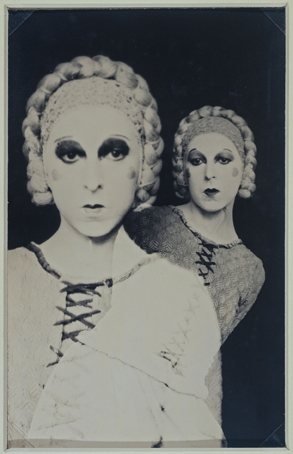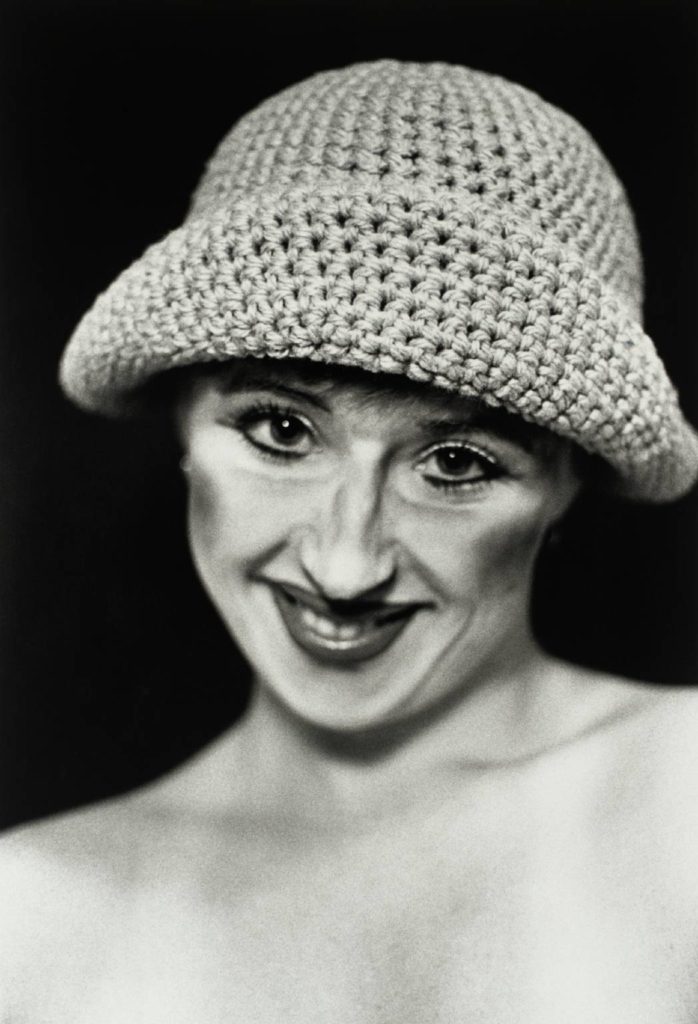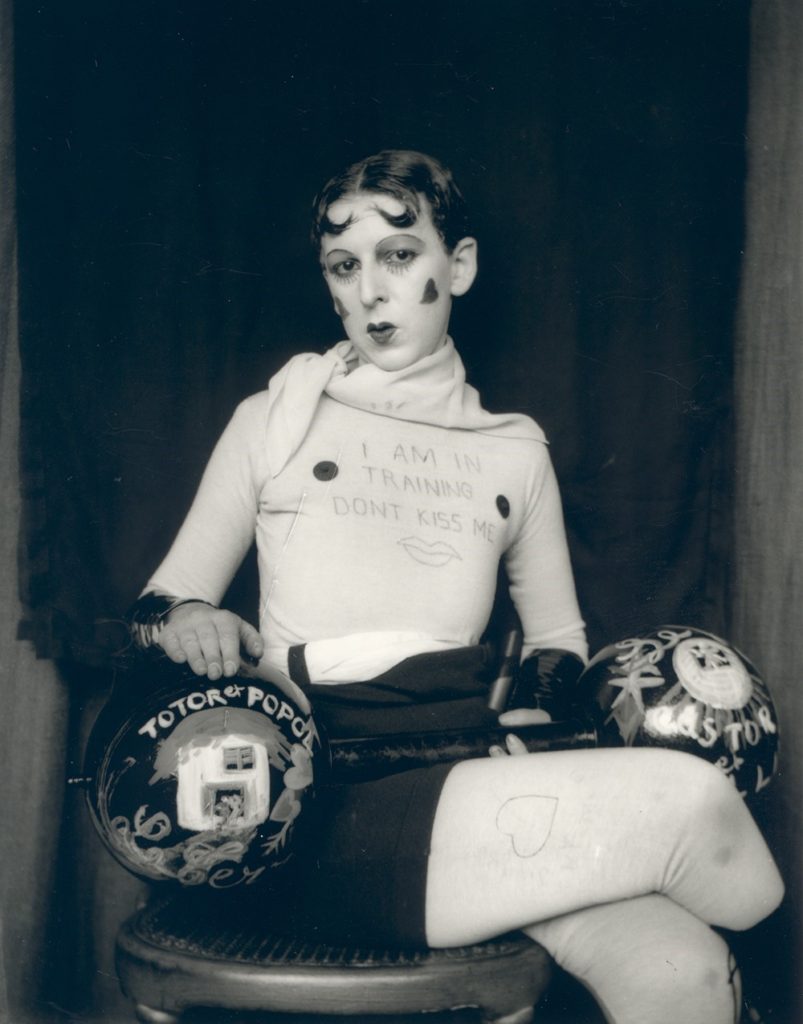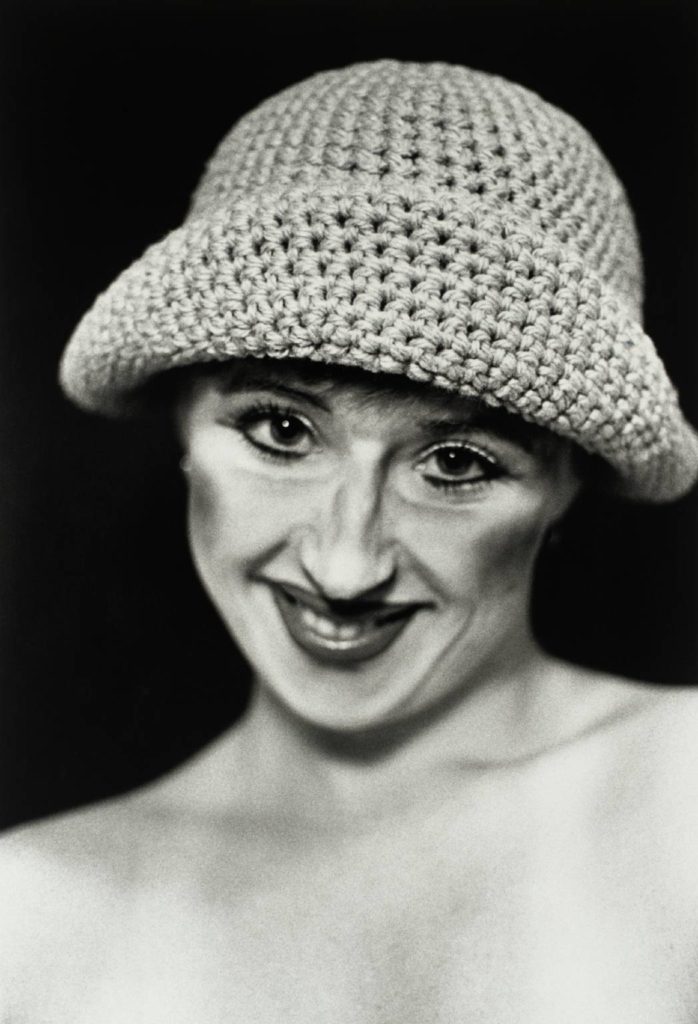CLAUDE CAHUN
Claude Cahun (1894 – 1954) was a French surrealist photographer, sculptor and writer. Born Lucy Renee Mathilde Schwob, they adopted the pseudonym Cahun in 1917, and are best known for their self-portraits, in which they assumed a variety of different and eclectic personas. Cahun’s work challenged the traditional concepts of gender roles, and in their autobiography they state: ‘Masculine? Feminine? It depends on the situation. Neuter is the only gender that always suits me.‘ It is likely Cahun would have identified as non-binary today.
In 1937, they settled in Jersey with their partner Suzanne Malherbe (pseudonym Marcel Moore). Following the German occupation of the island in 1940, both Cahun and Moore became active as resistance workers and propagandists, working extensively to produce anti-German fliers, which they would place discreetly in soldiers’ pockets or in cigarette packages. Their resistance efforts were not only political, but also artistic; using their creative abilities to undermine and manipulate the authority they hated. In many ways, Cahun’s life was marked by a sense of role reversal, and like many early queer pioneers, their public identity became a commentary upon the public’s opinions of sexuality, gender, beauty, and logic. Their adoption of a gender neutral name and their androgynous self-portraits display a revolutionary way of thinking and creating, experimenting with the audience’s understanding of photography as a documentation of reality.
CINDY SHERMAN
Cindy Sherman (1954 – ) is an American artist whose work consists primarily of photographic self-portraits, depicting herself in many different contexts and as various imagined characters. In 1972, Sherman enrolled in the visual arts department at Buffalo State College, where she began painting. During this time, she began to explore the ideas which became a hallmark of her work: She dressed herself as different characters, cobbled together from thrift-store clothing. Sherman works in series, typically photographing herself in a range of costumes. To create her photographs, Sherman shoots alone in her studio, assuming multiple roles as author, director, make-up artist, hairstylist, wardrobe mistress, and model. She explained to The New York Times in 1990, “I feel I’m anonymous in my work. When I look at the pictures, I never see myself; they aren’t self-portraits. Sometimes I disappear.” She describes her process as intuitive, and that she responds to elements of a setting such as light, mood, location, and costume, and will continue to change external elements until she finds what she wants.
Sherman’s work is often linked to feminism, since her photos call attention to the objectification of women in the media. Sherman’s 1981 series Centerfolds contains pseudo-voyeuristic images of young women. Her 2008 series Society Pictures addresses the obsession with female youth and beauty in American society. Her most recent series, the 2016 Imitation of Life, explores the glamour that can be found within mature women. By using stylized, vintage costumes and heavy makeup, Sherman is rendered as a subject that looks almost artificial, aside from her conspicuously-placed, aged hands, which point to the reality behind the illusion. Sherman has identified an uncertainty toward the Untitled series’ relationship with the male gaze.
IMAGE COMPARISON
Despite the fact that these two photographs were taken almost 50 years apart, the message behind each of them is strikingly similar; that identity can be whatever you want it to be. Both photographers explore what it means to be perceived and judged by others, and, perhaps more harshly, by yourself. They have stripped themselves of all things, both physical and emotional, in order to transform themselves into re-invented and more developed versions of their previous selves, with both of them taking on the roles of various different personas and characters. For the brief moments during which they are in front of the camera, they are able to let go of what they and society thinks they ‘should’ be, and express themselves through their art form. Both images have been shot in plain black and white tones, with Sherman adding the effect in order to accurately portray her character’s time of relevance. They have also both been shot against a black backdrop, which means we can assume that they were captured in a studio of some kind. The black backdrop also allows the viewer to see Cahun and Sherman clearly, with nothing in the background of the images becoming a distraction to the eye. Additionally, it strips the photograph of any depth, making both images appear flat and two dimensional. Furthermore, the two subjects have very pale complexions, which contrasts heavily to the dark background. As these pictures were captured in a studio, it is highly likely that artificial lighting was used to illuminate the subjects, and we can see that by the way the light is spread evenly over Sherman, we can assume that 3 point lighting was used. Another similarity is that both Cahun and Sherman have used makeup to exaggerate their features as a way to emphasise their respective characters. For example, we can see that Cahun has drawn on her bottom eyelashes in order to make her eyes appear larger and more doe-like, and Sherman has applied a heavy amount of contour to her cheekbones. This can be linked to the theme of identity as makeup is often used by people to create an entirely new face, or alter the one they had before.

